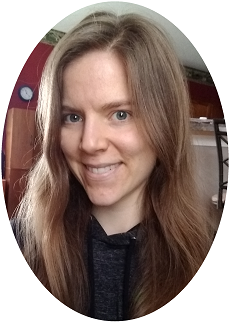If you’re following a whole food plant-based lifestyle, or even if you’re just trying to add more vegetables to your diet, you’re probably using a cutting board frequently. To keep your cutting board in good shape and lasting for a long time, you can use a little mineral oil.
Watch the video to see the quick and simple process or read below for a few more details.
Options for Protecting Your Cutting Boards
There are many different ways to care for a cutting board. I’m not a woodworking expert. There are plenty of those out there. So if you want all the pros and cons of different oils and finishes you can use on your cutting boards check those out.
Today, I want to get you started on one of the easiest and most basic ways to preserve your boards. This is to use mineral oil. It’s relatively cheap and food safe.
Cutting Board Care

Before we get to the mineral oil though, I want to give you a few quick tips for maintaining your cutting board. I never used mineral oil or any other finish on my cutting boards for years. My two boards have lasted for over 10 years of regular use without any special care other than one tip.
The most important thing I think you can do to save your boards is to wash and dry them immediately after use. This is the only special care I took with my boards for 10 years and I had no problems with warping or cracking.
These issues happen when the wood gets saturated and stays wet for long periods of time. So if you simply take care to keep your boards dry, that will go a long way for protecting them.
Mineral Oil

Now if you want a little extra insurance that your board will last longer or if you just want to brighten up a dull-looking board mineral oil will do the trick. Don’t worry about the oil if you are on an oil-free diet. This is not like the oil consumed in your diet and it won’t contaminate your food. The mineral oil will soak into the board and any amount that might transfer to food would be negligible.
One other note before beginning the process is that you can sand the board first if it is in really bad shape. I never do this because I didn’t think it was necessary for my boards. But if you have some really deep grooves or uneven parts on a really old board, that may be helpful.
If you watch the YouTube video linked above, you’ll see how easy the process is. But here are the basic steps if you want it written out:
- Set yourself up by clearing and cleaning off some counterspace to work on (you may get some oil on the worksurface in the process). Choose a food-grade mineral oil and get a clean soft cloth or paper towel nearby.
- Make sure your boards are completely dry. I like to ensure they have been drying at least overnight.
- Pour a little oil over one side of your board and start to rub it into the wood with the grain. You’ll want to make sure the surface is fully saturated, so add more oil as needed. The wood will look really wet.
- Flip your board and repeat the process.
- Be sure to cover all the edges of the board and any indentations in the surface.
- Once the board is fully covered in oil, lean it so it is mostly upright to dry. I lean it up against the wall with the edge just resting on a towel to protect the wall from getting oil on it.
- Let the board sit for a minimum of several hours, but overnight is better. You want to make sure the oil has fully absorbed into the wood. At this point it will no longer look or feel wet.
- Repeat as often as needed to maintain your boards.
Maintenance Schedule
It is often recommended to do this once a month. I personally do not think this is necessary. As I mentioned at the beginning I never even used mineral oil for 10 years. I was able to maintain the quality of my wooden cutting boards simply by washing them and keeping them very dry after every use.
The mineral oil just creates a little bit of a barrier between the wood and the water to help protect it further. Plus it makes your boards look really pretty and new. So I just use the mineral oil as needed whenever my board starts to look a little worse for wear.
If you’re just starting out on a whole food plant-based lifestyle check out my other WFPB Basics or try some of my easy recipes.

